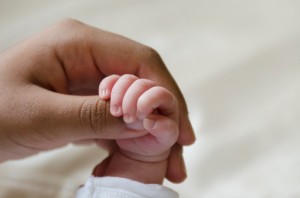Study Reviews Alternative Treatments for Infant Birth Asphyxia
 Birth asphyxia (or oxygen deprivation at the time of delivery or shortly thereafter) can lead to catastrophic brain damage, and is one of the main causes of cerebral palsy in newborns. Without an adequate supply of oxygen to the brain and vital organs, cells malfunction and begin to die, leading to both short and long-term damage.
Birth asphyxia (or oxygen deprivation at the time of delivery or shortly thereafter) can lead to catastrophic brain damage, and is one of the main causes of cerebral palsy in newborns. Without an adequate supply of oxygen to the brain and vital organs, cells malfunction and begin to die, leading to both short and long-term damage.
Standard treatment for newborns who suffered birth asphyxia has been to lower the baby’s body temperature in order to reduce the risk of permanent brain trauma and death. New evidence from a National Institutes of Health research team suggests that alternative treatments for oxygen deprivation in infants may provide no additional benefits.
“Preliminary studies in animals suggested that lowering body temperature and increasing the duration of cooling might provide additional benefits,” noted Rosemary Higgins, M.D., program scientist for the Neonatal Research Network, and the study’s lead author. “Although the results are disappointing, they do show the need to test any modification of a treatment — no matter how promising it may appear — before putting it into practice.”
Treatment alternatives for birth asphyxia
When a baby is starved of life-giving oxygen while still in the womb or during the labor process, he or she may go on to develop hypoxic ischemic encephalopathy (HIE) and/or cerebral palsy. Both conditions can cause the child to suffer seizures and permanent cognitive disabilities. Standard treatment for birth asphyxia has traditionally been to lower the baby’s body temperature for at least 72 hours with cooling blankets, so it drops 6 degrees Fahrenheit.
In this recent study, researchers randomly assigned 364 babies who had been diagnosed with HIE into to one of four treatment plans:
- Standard treatment: dropping the body temperature to 92.3 degrees for a period of 3 days
- Lowering the body temperature to 92.3 degrees for 5 days
- Lowering the body temperature 89.6 degrees for 3 days
- Lowering the body temperature 89.6 degrees for 5 days
According to the researchers, infants who were given the standard oxygen deprivation treatment had a marginally higher survival rate compared to those in the other three treatment groups. In the group given standard treatment, only seven percent died.
On the whole, the survival rates in all groups were statistically higher than those recorded in a 2005 infant cooling study, which examined this now routine method of treating HIE. Dr. Higgins concluded by saying, “Our study indicates that physicians won’t get a better outcome by making infants a little bit cooler for a little bit longer.”
When medical negligence is a factor
Childbirth can be fraught by numerous complications that pose risk to both mother and baby.
Birth asphyxia can result under a number of circumstances, including:
- Placental abruption
- Infection in the mother or baby
- Umbilical cord problems
- Difficult delivery compounded by shoulder dystocia
- Malformations in the baby’s airway
- Dangerously high blood pressure in the mother
- Anemia in the baby
There are certain situations where medical malpractice may be suspect in a child’s long-term disabilities caused by oxygen deprivation. For instance, deliveries where shoulder dystocia is improperly handled, and the baby is trapped in the birth canal, or the doctor fails to order a Cesarean section in time.
If it proven that health care providers in the delivery room were negligent in their duty or in some way deviated from the accepted standard of care owed to their patients, the victims may have grounds for filing a birth injury lawsuit. Successful litigation not only holds negligent parties accountable for their actions, it offers much needed legal compensation to the affected families, who are now faced with raising a special needs child.
- National Institutes of Health, Longer cooling, lower temperature no improvement for infant oxygen deprivation http://www.nih.gov/news/health/dec2014/nichd-23.htm
- CDC.gov, Facts about cerebral palsy, http://www.cdc.gov/ncbddd/cp/facts.html


 Resources
Resources
 Resources
Resources
